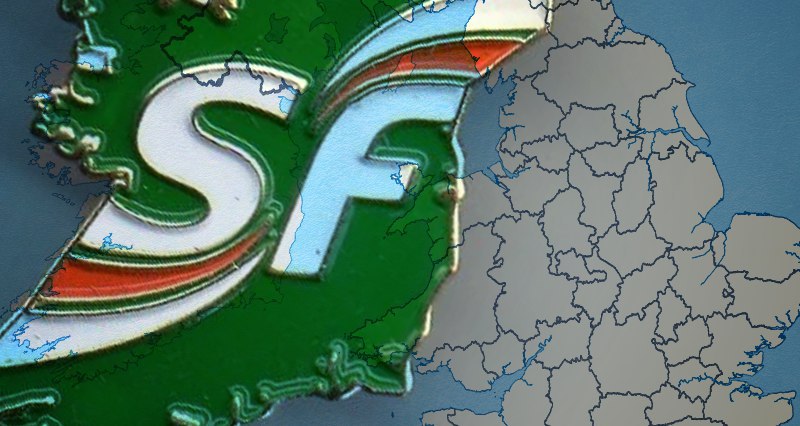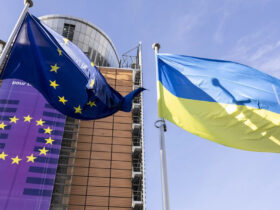The left-wing nationalist party Sinn Féin, associated with the Irish Republican Army, showed the best result in history at the February 8 parliamentary elections in Ireland. According to the exit polls, the ruling Fine Gael party received 22.4% of the votes, Sinn Féin 24.5% and Fianna Fáil – 22.2%.
Sinn Féin was closely associated with the Provisional Irish Republican Army (IRA) which fought the British and Ulster Unionists in Northern Ireland and always declared that it is a party for all of Ireland. Today it is present in the Irish Parliament as well as the Northern Ireland Assembly. Although Sinn Féin is running for the British parliament, traditionally party representatives do not appear in Westminster.
Coalition without a winner
159 deputies are elected to the lower house of the Irish parliament (one more – speaker Ó Fearghaíl of Fianna Fáil – is automatically re-elected). Thus, 80 deputies are needed in order to get a government majority. In this situation, it is necessary to create a coalition of two or more parties.
It's official @sinnfeinireland won the election – highest popular vote #GE20 pic.twitter.com/gTGqqFbVhD
— Mary Lou McDonald (@MaryLouMcDonald) February 9, 2020
Long before the election, the rise in popularity of Sinn Féin raised concerns among the mainstream media. The party was accused of not breaking with its nationalist past. Fine Gael had previously rejected any possibility of a coalition with Sinn Féin, advocating the creation of a new bipartisan government with Fianna Fáil.
In turn, the leader of Sinn Féin, Mary Lou McDonald, responded at a rally in Dublin that she intends to form a government “ideally with no Fianna Fail or Fine Gael in it”.
My first option is for Government "without Fianna Fáil or Fine Gael," says @MaryLouMcDonald. "I want a people's Government to be formed"
— Morning Ireland (@morningireland) February 10, 2020
To do this, she initiated negotiations with the leadership of a number of left-wing parties, such as the Greens and People Before Profit. At the same time, the Irish Greens, who, like European Greens as a whole, are left-liberal, can join the coalition of two centrist parties, thereby ousting Sinn Féin into the opposition. The Irish electoral system elects 160 (159, technically) deputies from 39 constituencies, yet it also features a preference system, allowing one to vote for “first preference”, “second preference, etc. This often gives centrist parties an edge. Even if the party wins first preference vote, the vacancies corresponding to the second and third preferences may be filled by the other parties. At the same time, the possibility of a redistribution of votes, when the votes cast for some candidates can, when counting, go to others, with the exact opposite election program, creates the prerequisites for fraud. Sinn Féin nominated only 42 candidates, so it is not physically possible to get the majority of seats in parliament. Fianna Fail or Fine Gae each nominated more than 80 candidates.
Reshaping the political landscape
The general election in Ireland demonstrates that the old model, when two centrist liberal political parties divided power, was over. Sinn Fein has become an influential third force, which relies on the dissatisfaction of the population with current politics, primarily the social costs of liberal rule. In the Sinn Féin election program, significant attention was paid to affordable housing, education, health care, assistance to the poor, etc.
Moreover, in much of its program, the party continues to remain nationalistic. Thus, the party’s election program states: “Sinn Féin does not want open borders. We believe that all states must manage migration.” The party advocates for the use of the Irish language and the support of national culture. This left-wing nationalist synthesis and rejection of the ruling liberal elites is broadly similar to what is characteristic of European populist parties. However, unlike them, Sinn Féin is not at all a new political force. It began with the origins of Ireland as an independent state. Alongside this, the new socially traditionalist and conservative Aontú party won at least two seats in Parliament as well. Sinn Féin is not, however, fully in line with other populist parties. They unify traditionally left-liberal characteristics with its left-nationalist agenda. This primarily concerns the protection of sexual minorities and abortions. Also, Sinn Féin opposes the EU’s Operation Sophia in the Mediterranean and stands for “search and rescue” operations for African migrants instead of pushing them from European borders. However, it is significant that in Catholic Ireland, almost all major parties underwent a similar transformation. For example – the current Taoiseach – Leo Varadkar – was the first Irish prime minister who came out as openly gay. He is also the first Irish prime-minister with Indian roots. Nevertheless, Sinn Féin is the only big party in Ireland who at least partially retains the original ideology of Irish republicanism.
Against NATO and for Irish Unity
In the field of foreign policy, Sinn Féin stands for the preservation of the country’s neutrality and the rejection of rapprochement with NATO, which was manifested during the previous Varakara government. In particular, the party states the need for Ireland to withdraw from the Partnership for Peace program. Among the priorities of Sinn Féin in the international arena is the recognition of the state of Palestine. The party also intends to “ ban goods from Israel’s illegal colonial settlements in Palestine from entering the Irish market by implementing the Occupied Territories Bill.” In regards to relations with Brussels, Sinn Féin adheres to moderate Euroscepticism. In particular, the party intends to withdraw Ireland from the previously concluded EU agreements: the EU-USA Transatlantic Trade and Investment Partnership (TTIP), the EU-Canada Comprehensive Economic and Trade Agreement (CETA) and the EU-Mercosur Free Trade Agreement. The party advocates the democratization of the European Union, and stands against “dangerous new negotiating powers on the Commission”. The Sinn Féin manifesto also says:
“It is time to end the Brussels power grab, to reign in the Commission, and return powers to the member states”. Also, Sinn Féin pledges that they will be “defending the Good Friday Agreement from the effects of Brexit” and promises a referendum on Irish Unity. The party, which is associated with the IRA, says it intends to seek reunification of Ireland only by peaceful means, but according to the party manifesto, the Irish government should already begin preparations for reunification. Irish nationalists hope that after Brexit, public opinion in the north will lean towards secession from Britain. According to Foreign Policy’s Dan Haverty, because of the results of Sinn Féin, “Saturday’s elections could be part of a broader trend leading to Irish unification”. It should be also mentioned that Sinn Féin is part of the Northern Ireland government as well.
The likely outcome
Experts predict that negotiations to create a ruling coalition may last a long time. Neither Fianna Fáil nor Fine Gael is ready to form a coalition with Sinn Féin. At the same time, given that the elections were held due to disagreements between Fianna Fáil and Fine Gael, the first party will not be particularly pleased with the “grand coalition”. Much in this case will depend on the ability of Fianna Fáil or Sinn Féin to create a fragile coalition with several left-wing parties that go to parliament. There is a theoretical likelihood of Irish nationalists coming to power. Nevertheless, one should expect that mainstream political parties, despite all their differences, will unite against Sinn Féin. In this case, the elections in Ireland will once again demonstrate that European elites are not ready to listen to their own people and ignore the democratic expression of will. If the party that won the election is not represented in the government and its ideas of Irish neutrality, social economy and moderate Euroscepticism are rejected by the new government, this will be a symptom of the crisis of democratic institutions in Ireland and in the EU as well.

















Leave a Reply